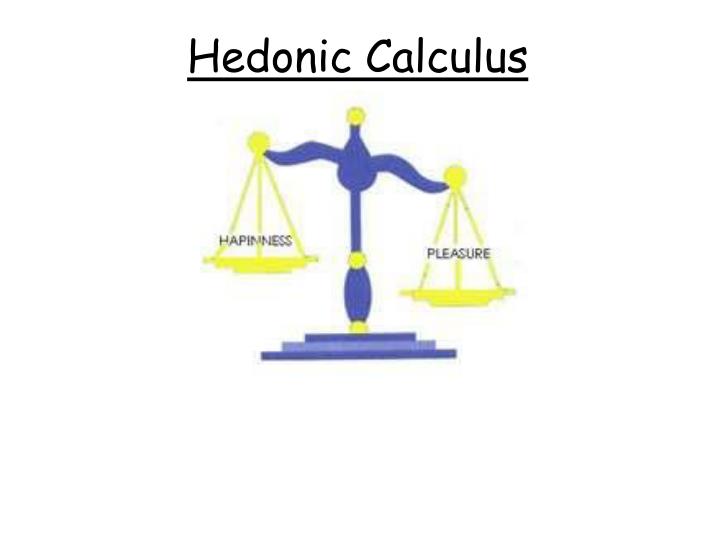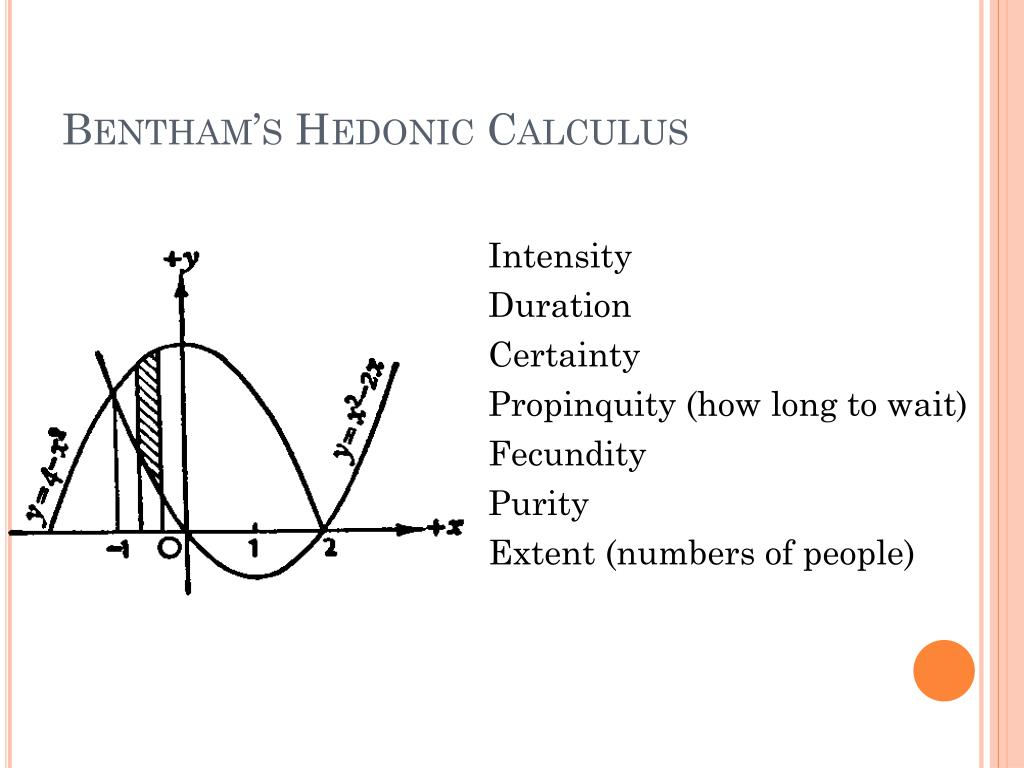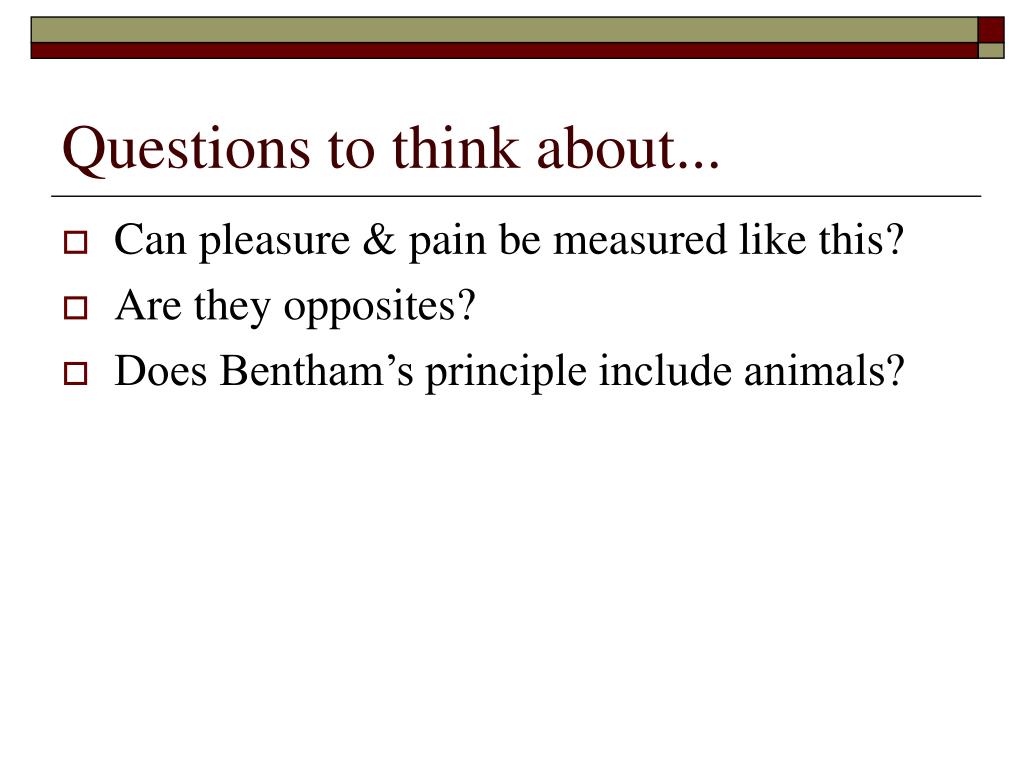

Finally, I present an argument in favor of the hedonic calculus that I endorse, along with possible objections and my replies. Several of these arguments are unsound or question-begging. The concept is based on estimation of pain and. This suggests that since duration is clearly quantitative, intensity must be, too, because if it were not, there could be no equivalence between the brief but intense and the lengthy but mellow episodes. Benthams Hedonic calculus has a utilitarianism approach towards evaluation of actions at their optima level. A third type of argument rests on the claim that it is sometimes rational to be indifferent between a longer lasting, less intense episode of pleasure and a more intense but shorter episode. Others attempt to argue that, for example, two people enjoying something must involve more pleasure than if just one person were enjoying it. Many philosophers, such as Bentham, Mill, Ross, and Plato, seem to assume, without any serious argument, that pleasure and pain are quantitative.

The seventh chapter addresses arguments in favor of the legitimacy of the calculus.

Others involve false analogies between hedonic and other sorts of phenomena. Some arguments crucially involve a failure to distinguish between the existence of a quantity and our ability to perform reliable measurements of it. I argue that each argument suffers from at least one fatal flaw. A final argument holds that, for a variety of reasons, the various mathematical operations constitutive of quantitativeness are not applicable to pleasure or pain. A third, closely related to the first two, argues that pleasure and pain are too heterogeneous to be quantitative. Another argument proceeds from the observation that interpersonal comparisons of pleasure and pain appear to be impossible. One argument stems from the observation that pleasures and pains are essentially transient and ephemeral. The sixth chapter addresses arguments that pleasure and pain fail to meet these formal conditions. I argue that apparent instances of being on a par are in fact instances of vagueness or complexity and do not threaten the truth of the trichotomy thesis. The fifth chapter is a defense of the thesis that there are exactly three relations of quantitative comparison from a recent attack. These structures include the presence of a unique order the possibility of equal intervals and a natural, non-arbitrary zero point. hedone pleasure) a method of working out the sum total of pleasure and pain produced by an act, and thus the total value of its consequences also called the felicific calculus sketched by Bentham in chapter 4 of his Introduction to the Principles of Morals and Legislation (1789). I argue that quantities are determinate properties whose determinables enter into greater-than, less-than, or equal-to relationships that are homomorphic with the structure of the real number line. The third and fourth chapters concern the nature of quantitative phenomena. The second chapter explores the nature of hedonic phenomena, arguing that pleasure and pain are propositional attitudes they are not feelings or feeling-tones, nor are they fundamentally a matter of desire or motivation. The first chapter is an introduction to the problem-in it, I explain what the hedonic calculus is, why it is important, and why it has recently come under disfavor. These operations are ones that utilitarianism and related normative ethical theories treat as central to moral phenomena. The hedonic calculus presupposes that pleasure and pain come in amounts amenable to addition, subtraction, and aggregation operations. Bentham envisaged the calculus could be used for criminal law reform: given a crime of a certain kind it would be possible to work out the minimum penalty necessary for its prevention.The topic of my dissertation is the hedonic calculus.

We should next consider the alternative courses of action: ideally, this method will determine which act has the best tendency, and therefore is right. When determining what action is right in a given situation, we should consider the pleasures and pains resulting from it, in respect of their intensity, duration, certainty, propinquity, fecundity (the chance that a pleasure is followed by other ones, a pain by further pains), purity (the chance that pleasure is followed by pains and vice versa), and extent (the number of persons affected). hedone pleasure) a method of working out the sum total of pleasure and pain produced by an act, and thus the total value of its consequences also called the felicific calculus sketched by Bentham in chapter 4 of his Introduction to the Principles of Morals and Legislation (1789).


 0 kommentar(er)
0 kommentar(er)
